Living with Sharks and Rays in Timor-Leste
Timor-Leste is a small, extraordinarily biodiverse nation with artisanal, community-based fisheries. Each community typically operates few vessels (10–30) from beach landing sites; most are wind- or paddle-powered, with only a handful using engines. Fishers employ diverse gears to target lower- to mid-trophic species (e.g., sardines and garfish). Fishing is a way of life that brings the whole community together — from children to elders — everyone joins in, lending their hands and laughter to pull the boats from the sea. They invited me in this communal task, and I gladly joined, feeling the unity that binds them to the ocean.
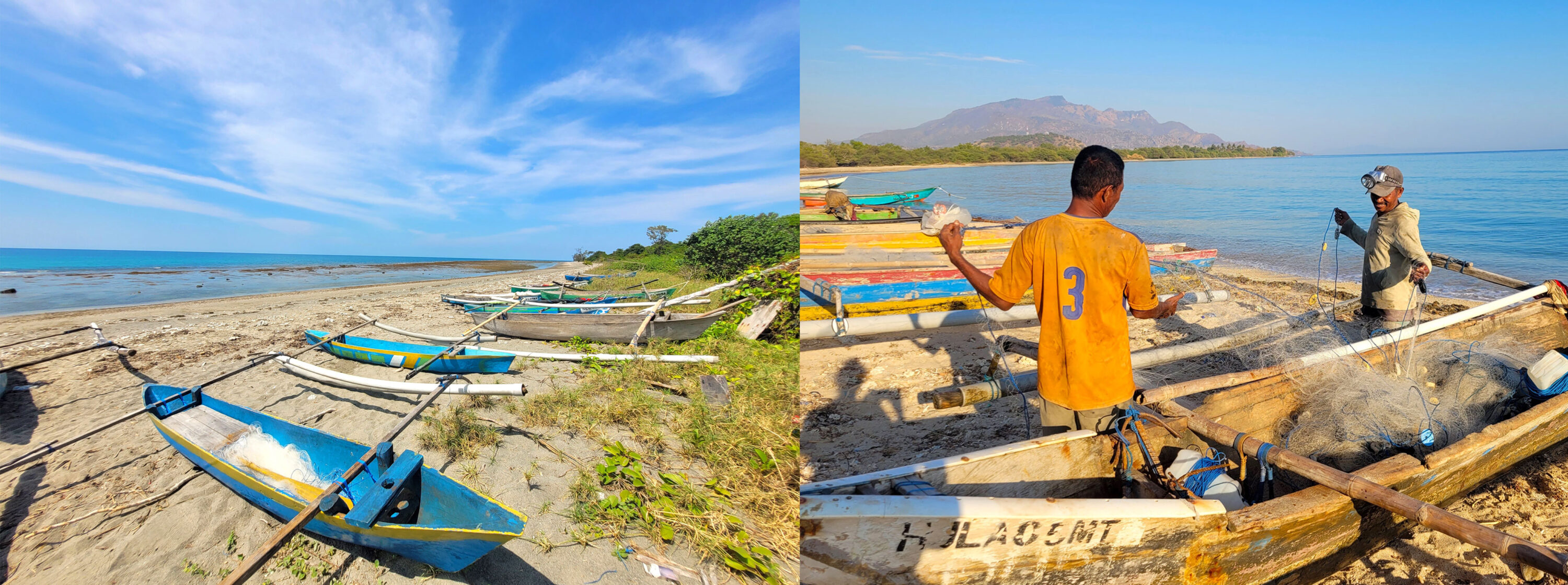
Vessels used by fishers. Most fishing occurs within 5 nm of the coast, with daily group trips departing early morning and returning by mid- to late-afternoon. Photo © Adriana Gonzalez-Pestana
Timor-Leste has a distinctive recent history: Timorese people fought for its independence and in 2002 become a nation after surviving centuries of European colonial rule, Japanese invasion during World War II, and the decades long, violent occupation by Indonesia. Widespread human rights abuses, including genocides, occur throughout Timor’s history. Timorese communities have shown remarkable resilience, demonstrating how optimism and solidarity can counter despair.
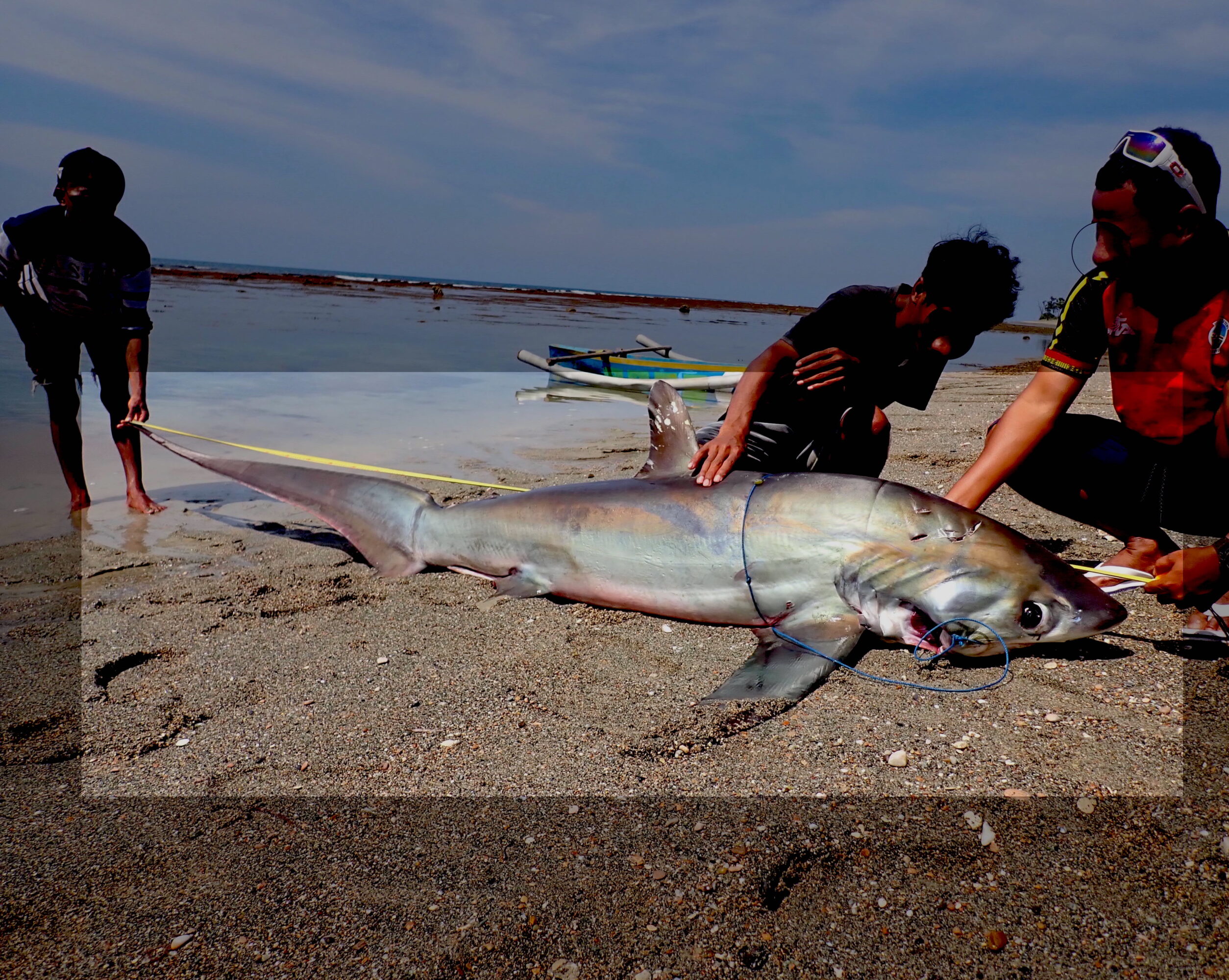
A Thresher Shark (320 cm) captured on the island’s south coast with a handline at ~100 m depth; hauled by a single fisherman in a canoe. Photo © Adriana Gonzalez-Pestana
Emerging from its past, the young nation looked for a 21st-century course. A decade ago, the country started its first fisheries monitoring system, co-designed and implemented by the government and WorldFish, an international NGO. Yet, knowledge of sharks and rays remains limited, with no established baseline. Geographically this nation sits between Indonesia, with the world’s most intense shark and ray fisheries, and Australia, a globally recognised lifeboat region for this threatened group. Recently, under international pressure, the government banned all shark and ray fishing, especially CITES-listed species of global conservation interest (e.g., hammerhead sharks).
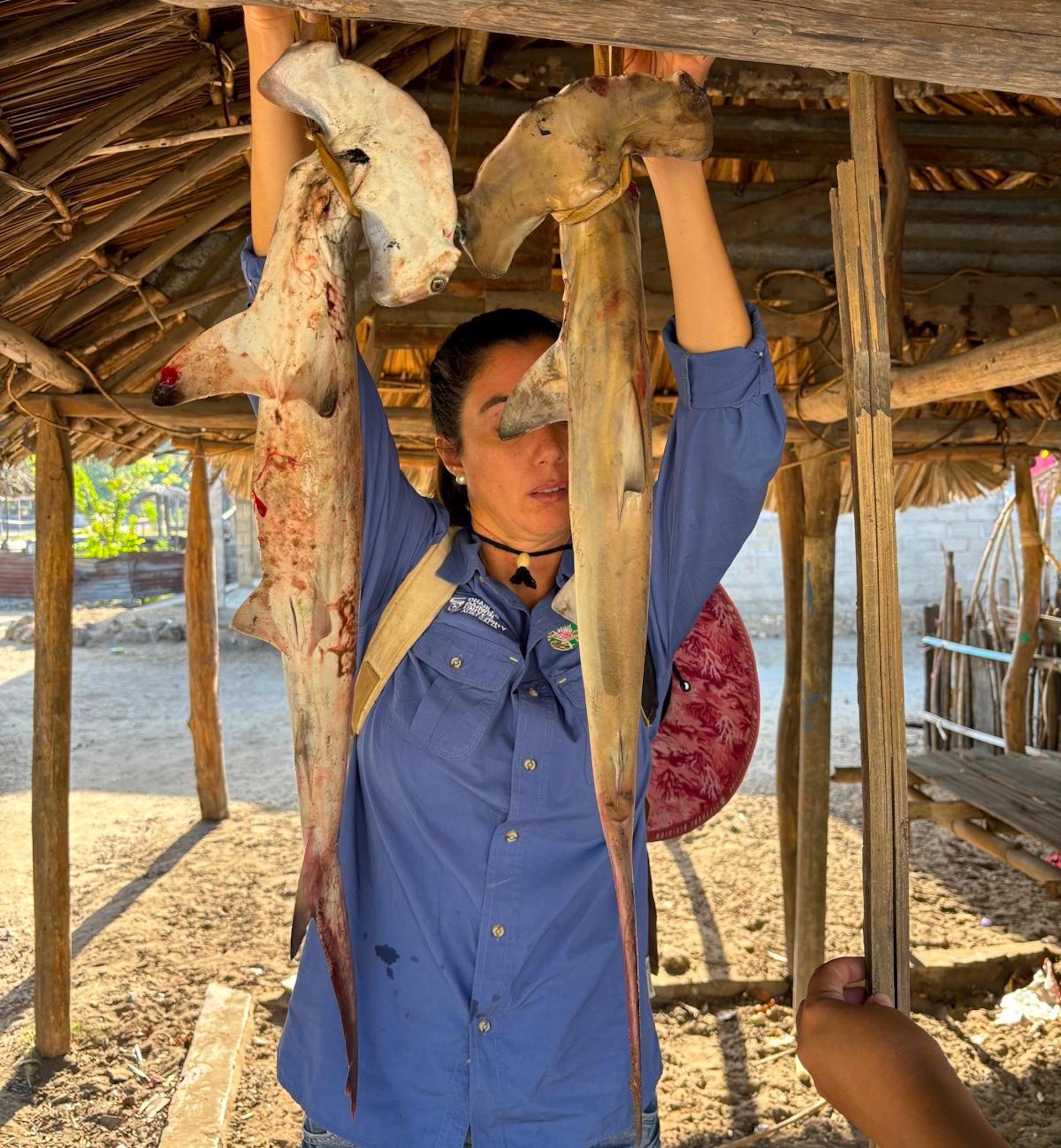
Small Scallopped Hammerheads one of the most common sharks caught which suggest that nursery areas might be in coastal waters. Photo © Julia Constance
Simple measures rarely achieve their intended outcomes in complex systems. This well-intentioned government ban collides with the needs of communities for food security and livelihoods stemming from coastal marine resources. Blanket bans can be ecologically ineffective, especially in mixed-species tropical fisheries, as enforcement is often impractical. Such prohibitions may lead to unintended outcomes for wildlife and people. For example, bans like this may lead to unreported and unmonitored catch, as observed in small-scale fisheries in Colombia and Honduras. Monitoring is essential for management, but this measure may unintentionally deepen information gaps on elasmobranchs and the broader socio-ecological system (e.g., uses and values of elasmobranchs). Therefore, as fishing effort grows, the outlook for this endangered group could darken, while transparency declines and the distance between citizens and their representatives widens.

Several carcharhinid species are commonly caught. Field identification is challenging due to similar morphology, and enumerators often lack the capacity to distinguish them reliably. Photo © Adriana Gonzalez-Pestana
During my first fieldwork trip to Timor-Leste, I arrived with a carefully designed questionnaire and left with new, relevant human-centred design questions to ensure the project contributes positively: Is the ban realistic/achievable? Do communities support it or is it seen as lacking legitimacy? What are fishers’ underlying perceptions about what is classified as undesirable bycatch and target species (or something in between such a valuable secondary catch)? I see the path forward as co-developing options with Timorese communities, strengthening monitoring that detects chondrichthyans, and shaping policies that balance conservation goals with subsistence realities so people and sharks are not forced into conflict.
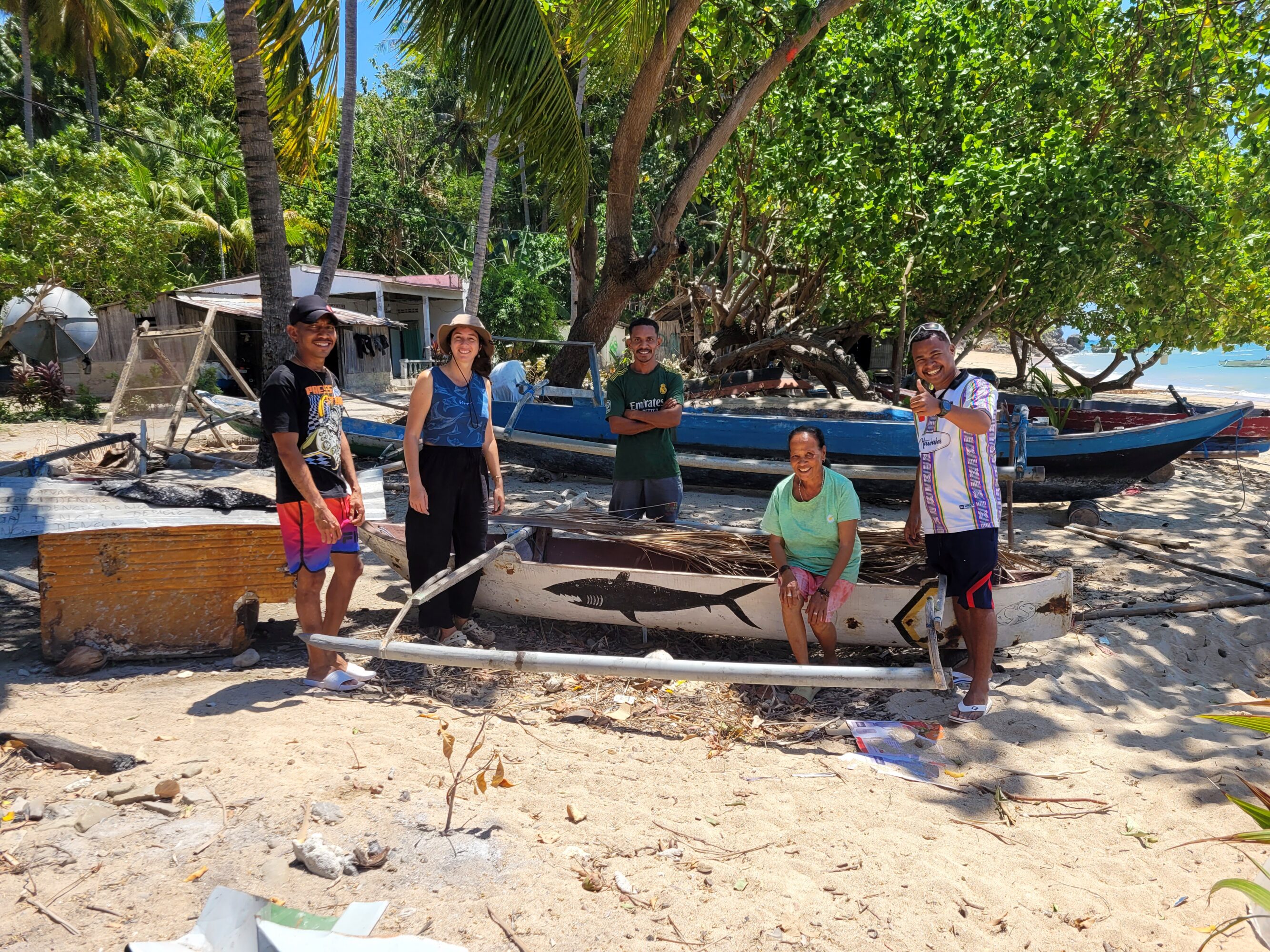
A family with ancestral ties to sharks regards them as kin; consequently, killing or eating sharks is taboo, and consuming or selling them is believed to bring ill health. Photo © Adriana Gonzalez-Pestana
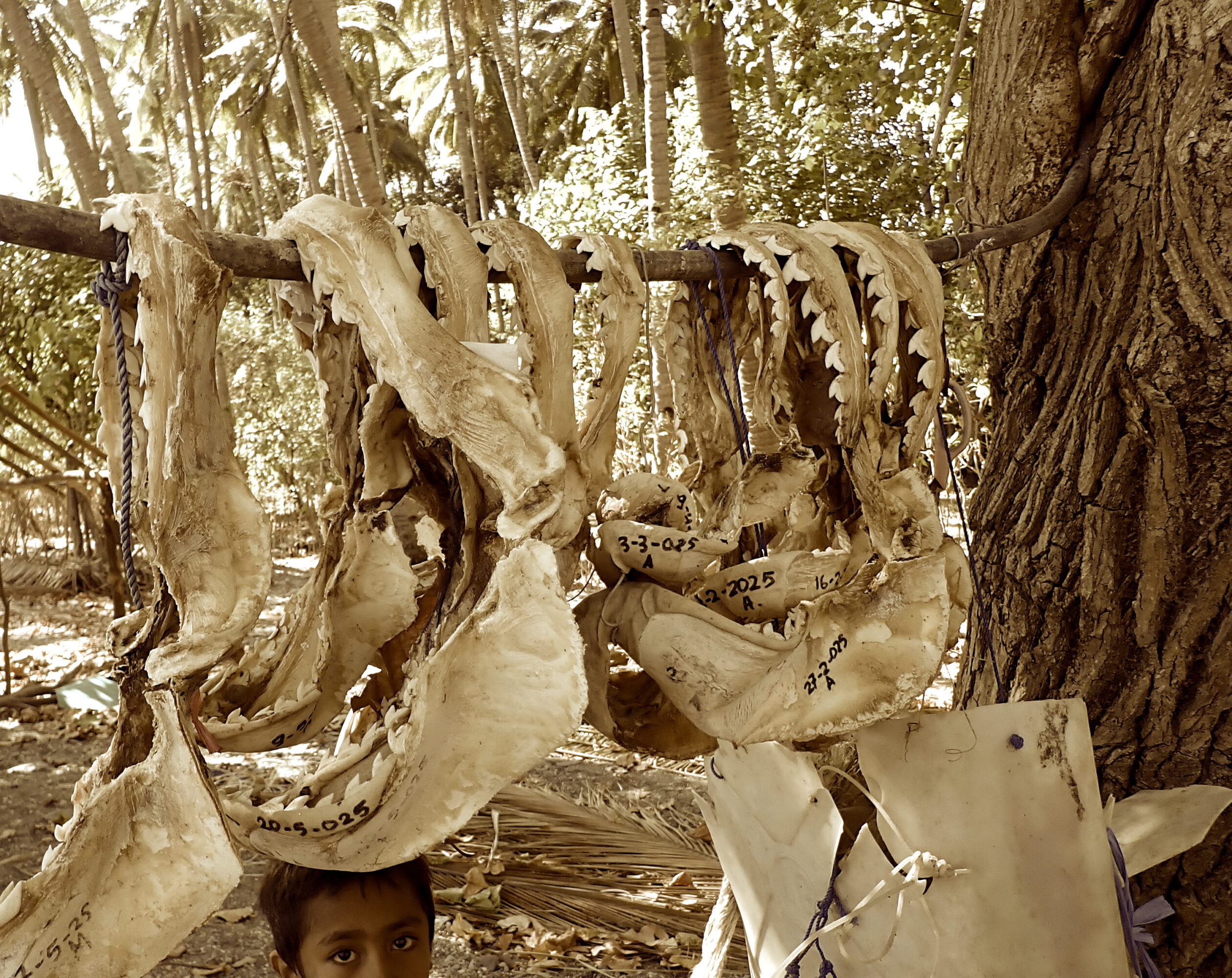
Collection of Tiger Shark jaws in a northern fishery community. Sharks were caught by land-based handlines. Photo © Adriana Gonzalez-Pestana
Tetum vocabulary: elasmobranchs and their habitat
Tasi: Ocean
Ai-parapa: Mangroves
Ikan: Fish
Peskador: Fisher
Ikan hui or Tubaraun: Shark
Ikan pari: Ray
Tubaraun Loren: Camouflage (i.e., military uniform) Shark (Tiger Shark)
Tuburaum Kaado: Sawfish
